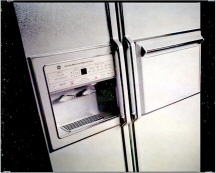Smart Appliances
This article was initially published in Today's Engineer on June 2002
It used to be that people welcomed appliances that had more features and were more automatic than their predecessors. The automatic toaster, for example, was introduced in the 1920s and saved countless pieces of bread from burning. Everyone welcomed the automatic washing machine, which was introduced in the 1930s and moved by itself from one cycle to the next. Another advance was the clothes drier with a timer, and then better yet, the model with a sensor that detected when the clothes were dry.
In the 1920s, when families gathered around and tuned in a radio, they risked "blasting," which occurred when they dialed in to a local or especially powerful station. Harold Wheeler's invention of automatic volume control, implemented in 1930 on the Philco 95, solved this problem. On car radios, buttons for pre-set tuning meant fewer distractions for drivers. And in recent years, appliances such as bread machines and rice cookers often come with extremely sophisticated, microprocessor-based controls — and in the case of some rice cookers, even involving fuzzy logic.
But as appliances gained more features and did more things by themselves, problems arose. These problems have served as a rich source of comedy for filmmakers. In "Mon Oncle" (1958), for example, Jacques Tati shows a modern kitchen, with automatic appliances and automatic cabinet doors, going out of control. In Woody Allen's "Bananas" (1971), Fielding Mellish gets manhandled by the Execusizer, an exercise machine for the office worker. In "Return of the Pink Panther" (1974), Inspector Clouseau struggles to control a vacuum cleaner. And the powered chairs of Dr. Evil and Mini Me in "Austin Powers: The Spy Who Shagged Me" (1999) seem to have minds of their own.
In addition to having an appliance that does things we don't want it to do, devices that have so many features that we can't figure out how to use them create problems of their own. Sports watches may have a dozen capabilities — count down, count up, lap timing, pacer, alarms, dual time zone readings — yet often get used only to tell what time it is in a single zone. Most home entertainment systems have several remote controls, making it difficult to figure out how to do something as simple as turn down the volume. This is exactly the problem parodied in the movie "The Mirror Has Two Faces" (1996).
VCRs are notoriously difficult to figure out. In "City Slickers" (1991), an hours-long effort to explain how to program a VCR helps pass the time on the cattle drive. This joke is repeated in "City Slickers II" (1994). Something similar occurs in "Excess Baggage" (1997), when one of the characters tries to explain over the telephone how to program a VCR. And in "Spy Hard" (1996), fun is made of the difficulty of simply viewing a videotape ("Set it to Channel 3…Switch off cable…" and so on).
Of course, problems associated with "smart" technologies have not gone unnoticed in print media. Humor columnist Dave Barry wrote: "And now the appliance manufacturers want to give us even more features. Do you know what this means? It means that that some night you'll open the door of your "smart" refrigerator, looking for a beer, and you'll hear a pleasant, cheerful voice ... telling you: Your celery is limp. And if you want to make the refrigerator stop, you'll have to decipher owner's manual instructions: To disable the produce crispness monitoring feature, enter the command mode, then select the edit function, then select 'change vegetable defaults'…
Such parodies don't seem much different from the actual problems — and ultimate remedies — many of us encounter regularly in this age of "smart" technology.
